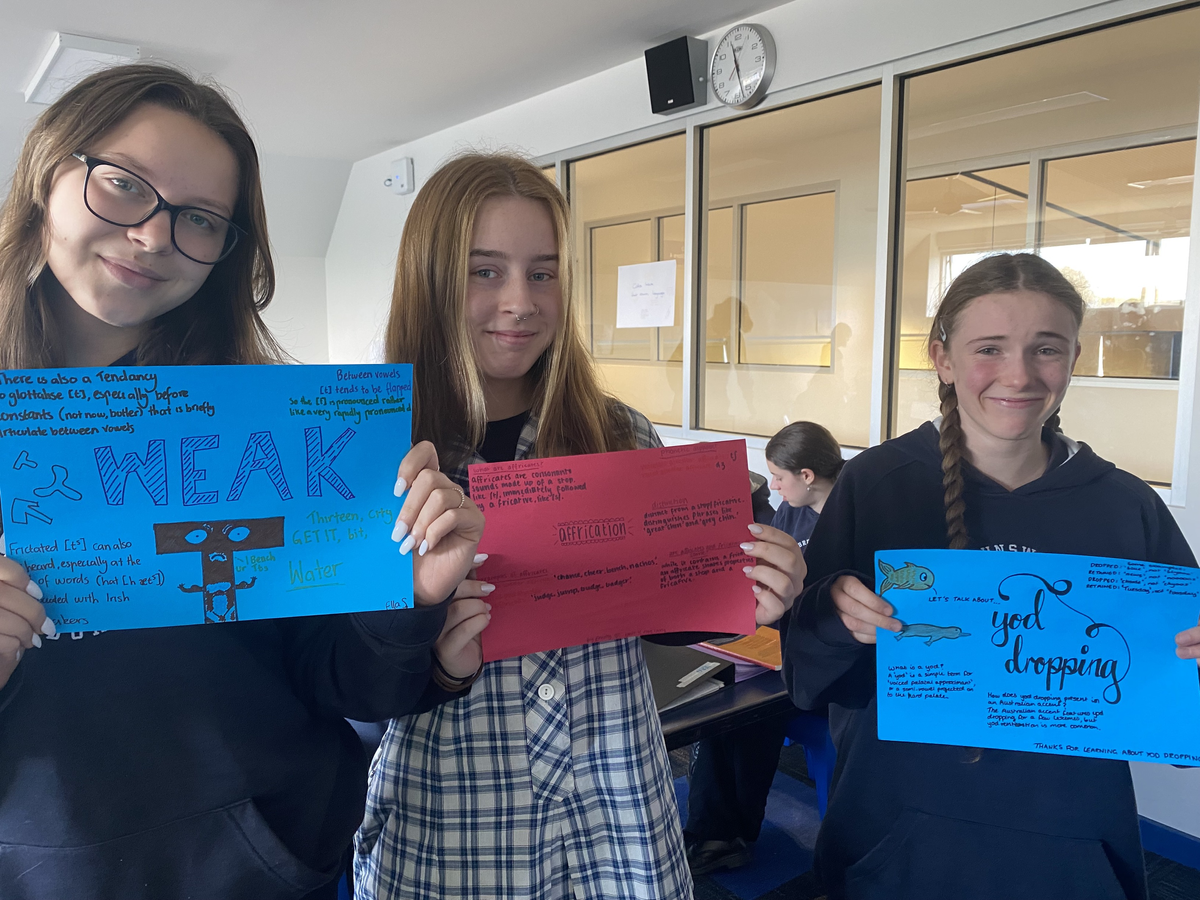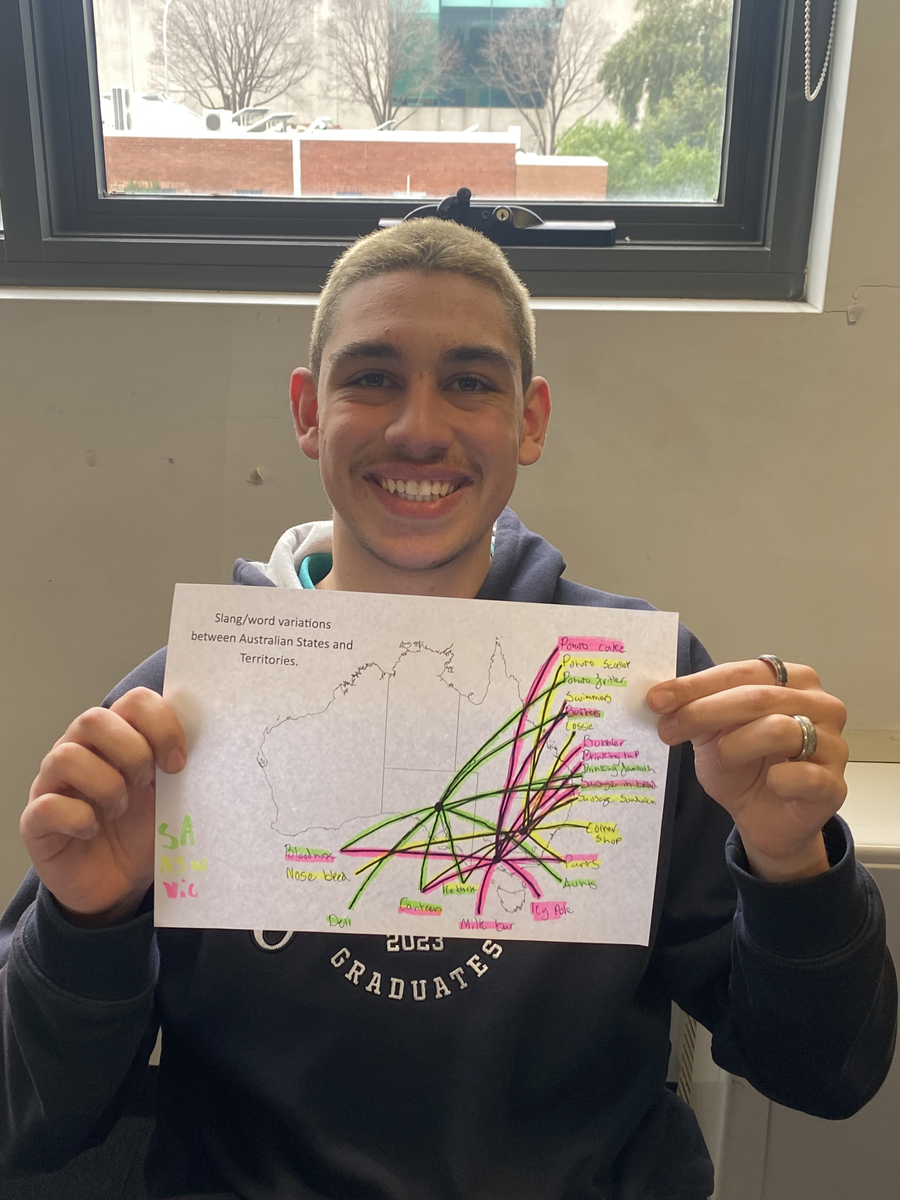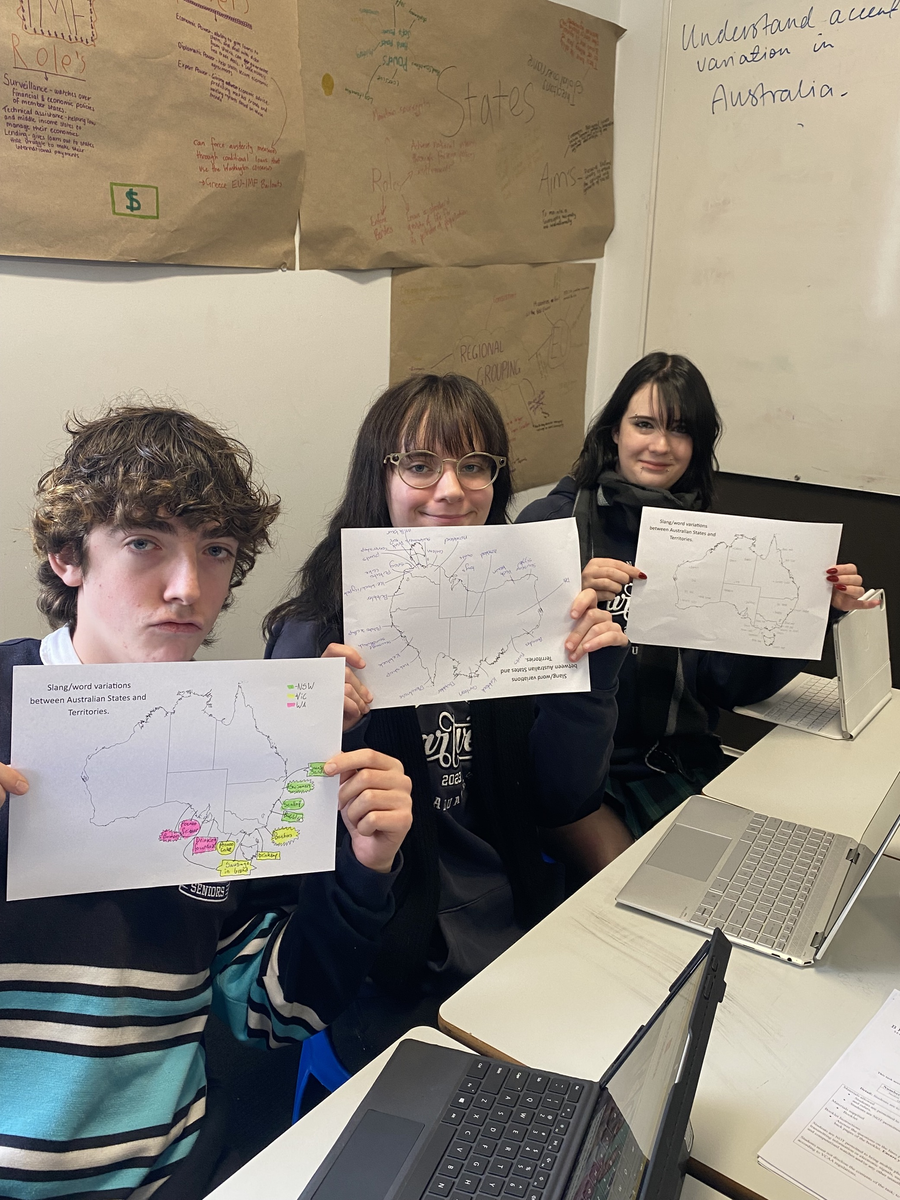VCE English Language
Crikey! VCE English Language students take a deep dive into Strine English

VCE English Language
Crikey! VCE English Language students take a deep dive into Strine English


Katie Simkin
Teacher - VCE English
After finalising VCE Unit 3 of their studies, the Year 12 Unit 3 & 4 English Language class have jumped into their second last area of study for the year, Language Variation in Australia.
The cohort have started off this new area of study by focusing on understanding and analysing the characteristics of the Australian accent. Listening to examples of different Australians from a range of time periods enabled the class to gain an insight into the history of the accent we hear around us today.
The varying examples also assisted the class in unpacking the characteristics of the various types of Australian accents. Spending time comparing accents amongst the class, students ranked themselves from most cultivated Australian accent to the broadest accent with several sitting in between. They followed this up by completing information sheets and posters about the main characteristics and features of the Australian accent. These visual aids will be used as a revision tool and a consistent reminder of the characteristics throughout the area of study.
The parma vs. parmi debate was a strong topic of conversation in the following lessons where the class explored the regional variation in accent and slang throughout Australia. Mapping out the differences between regional lexemes such bathers vs. togs, sausage in bread vs. sausage sandwich and the most controversial amongst the class potato cake vs potato scallop. These discussions also allowed the classes an opportunity to explore the variation in our own language and the wide variety of factors that contribute to these variations.
It has been fantastic to see a strong start to Unit 4 across both classes!


Christopher Georghiou
Year 12
In English language this term we looked at Formal Language features, like the expression of values, attitudes, and beliefs in texts and speeches. We also looked at how patterns in text contribute to cohesion, coherence, and formality. As well as this we also studied the impact of prosodic features such as intonations and pauses on the formality of speeches. Some of the tasks we completed this term were short answer SACs and analytical commentaries, both pertaining to our knowledge of formal language. As we have started Unit 4, we have [begun]to learn about Australian Identity. We have looked at the range of Australian accents and vocabulary across states and territories. This provided insight into the rich linguistic variations within the country. Overall, this term has been a rewarding exploration of formal language features, their role in effective communication, and the fascinating aspects of Australian Identity reflected in accents and vocabulary.


Emily Wright
Year 12
This term in English Language, we learned about the use of formal language with aspects of register, social purpose and cultural context. We used metalanguage to describe the formality of the register, the meaning behind social purpose, and the context of the text.
We read about the Voice to Parliament and were asked to write an analytical commentary based on Anthony Albanese’s speech proposing the referendum. This text was useful in many ways, especially since most of the Year 12 students will be voting in the referendum at the end of the year. The text also gave us insight on the ways that government officials speak when trying to maintain positive face needs.
We have recently started Unit 4, learning about the different types of Australian Language. This varied from accents, to slang, to geographical differences for words. For example, parmi vs parma depending on where you are geographically. The different Australian accents we’ve looked at are Broad, General and Cultivated. The broad accent is considered to be very “bogan,” the general accent is the typical Australian accent that most people speak, and the cultivated accent is quite fancy, how people from Adelaide typically say “dance” rhyming with aunts. We also looked at regional vs national variations, like how potato cakes can be called potato scallops in New South Wales, Queensland and the Northern Territory. Interestingly, Western Australia and South Australia call them potato fritters!
We did an activity in class where we read aloud a sentence and the rest of the class had to put us on a spectrum ranging from Broad accent to Cultivated. The sentence we read was “Most Tuesday’s I like to go into the city of Melbourne, grab a coffee with my mate and go down to the Yarra River to watch the trout swim in the water."
Click on the gallery to enlarge.



















